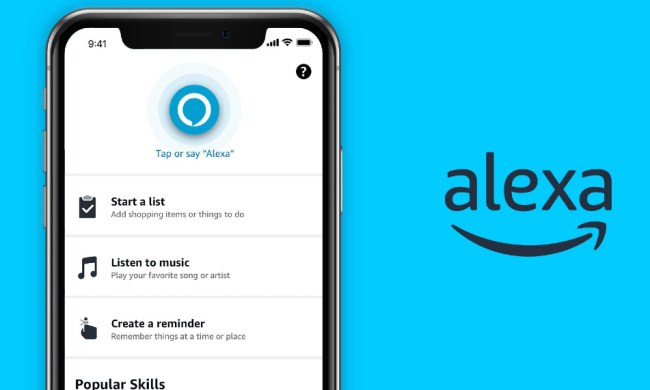Smart speakers have come a long way in the last several years, and more and more homes are jumping on the voice assistant bandwagon. Two of the brands leading the charge on smart audio are Amazon and Apple. In this side by side, we’ll be comparing Amazon’s Alexa-equipped flagship speaker, the Echo Studio, with Apple’s Siri-powered HomePod, the bigger and louder of the two smart speakers in the Apple canon. Categories include price, design, sound quality, and features. Read on to see which of the two speakers is our favorite.
Price
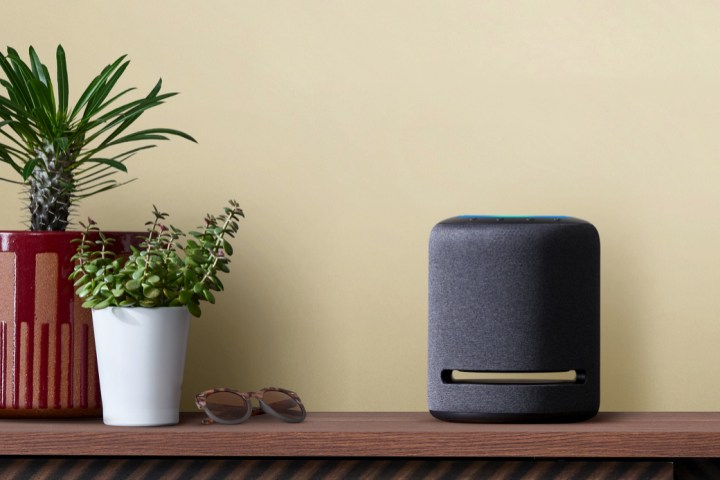
Apple’s HomePod currently sits at a price point of $299 on Apple’s website – a $50 price cut since the device was first released in 2018. Amazon’s Echo Studio starts at $199, a significant $100 cheaper than Apple’s alternative. It also offers a few accessories you may choose to add to your cart, such as the Echo Sub, which adds additional bass response via a wireless subwoofer for $129.
Both speakers can be purchased in pairs to establish a true left and right stereo experience – the Echo Studios would come in at around $400 for a pair, while the Apple HomePod combo would come in at just under $600. From a pure price perspective, the Amazon Echo Studio delivers at a lower price point.
Winner: Amazon Echo Studio
Design
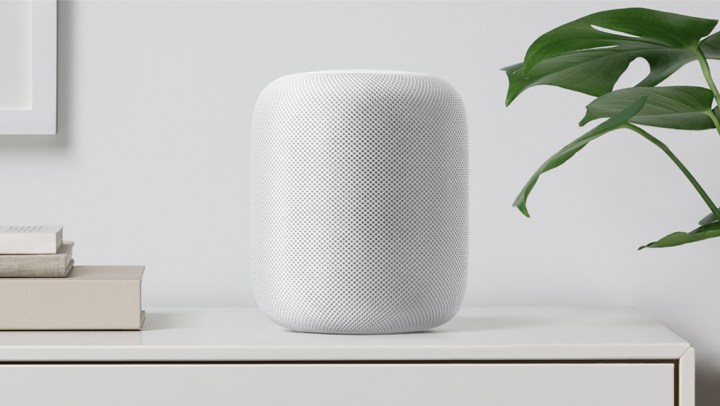
On the exterior, the Apple HomePod boasts a seamless mesh fabric that Apple touts for both its aesthetic and acoustic performance. Looking inside the HomePod, you’ll find an array of audio technology, including a high-excursion woofer and an array of seven horn-loaded tweeters. Additionally, each tweeter, as well as the woofer, has its own custom amplifier.
Amazon’s Echo Studio uses a similar cylindrical design with a fabric covering; however, the design is broken up with a slit in the lower half of the unit that serves as a port for the internal woofer. An additional difference comes down to each company’s choice of user interface with the HomePod sporting a glass touchscreen, and the Echo Studio choosing more traditional physical buttons. Within the Echo Studio is a woofer, three midrange drivers, and a single tweeter. While designs both are impressive, Apple has stolen this category with its more seamless, elegant design and use of touch display.
Winner: Apple HomePod
Sound Quality
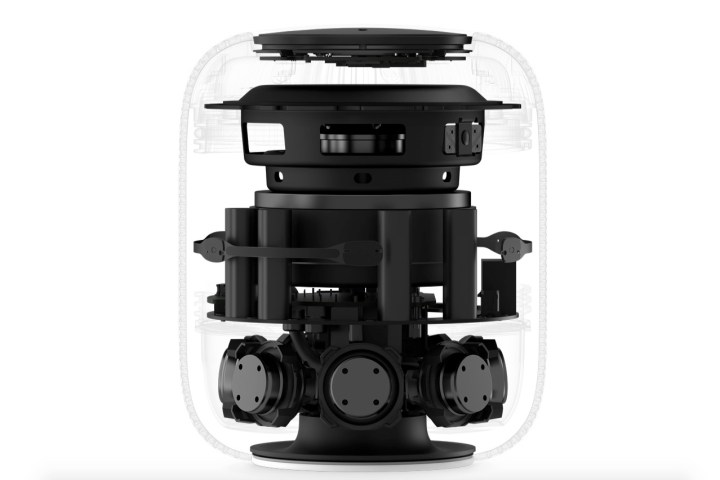
Turn on the Apple HomePod, and you might just be surprised by how much sound the small cylindrical design can push out. It’s not only a loudspeaker, either, but it also sounds wonderful. The HomePod’s sound can be chalked up to a fine selection of internal drivers, as well as Apple’s audio technology, which we will discuss a bit more in detail in the next section. The HomePod delivers tight bass response that hip-hop and rock fans will love, as well as a clarity that fans of vocals and instrumentals should enjoy.
With that said, Amazon’s Echo Studio still took center stage in the room with a sound that is quite impressive. While the unit didn’t feature as tight of bass response as Apple’s HomePod, it still delivered a good kick. As we head up into the midrange and higher frequencies, we did find detail to be lacking in specific areas, but not enough to detract from the enjoyment of the speaker. While both speakers feature impressive performances for their sizes, we need to give Apple’s HomePod the extra respect it deserves for its level of clarity and detail.
Winner: Apple HomePod
Features

Before jumping into the features brought forth by each speaker’s virtual assistant, let’s take a look at what base technology each offering brings to the table to improve the experience for the user. Apple’s HomePod utilizes computational audio to deliver sound based on the environment around it; if the speaker is moved, the HomePod will automatically recalibrate itself for optimal sound. Users within the Apple ecosystem will enjoy Apple’s inclusion of AirPlay 2 within the speaker, allowing most Apple devices to cast audio to the device with ease. When it is time to conjure up Apple’s voice assistant, Siri, six microphones embedded within the HomePod can hear you no matter where in the room you are positioned.
Amazon’s Echo Studio also analyzes your listening environment to deliver optimal audio based on the acoustics of your room. Echo Studio also features Zigbee functionality built-in, meaning that the device can pair with a plethora of smart home devices for easy control. While the Echo Studio doesn’t feature AirPlay, the speaker does sport Bluetooth connectivity, as well as the ability to stream audio from your Fire TV effortlessly. When it’s time for Alexa to step in, a collection of internal microphones wait at the ready. Arguably, the Echo Studio’s most prominent feature is the integration of Dolby Atmos 3D audio technology; however, we found music for the format to be few and far between, but it holds promises for the future.
If you’ve had experience with either Siri or Alexa in the past, the experience will likely be the same when using each respective assistant’s smart speaker. Apple’s HomePod includes its Siri voice assistant, allowing users to easily play music, ask questions, or control HomeKit devices with ease. On the flip side, the Amazon Echo offers similar abilities with Alexa, your choice of the best assistant will likely come down to personal preferences.
When comparing the two products, one pretty undeniable thing is the number of audio services compatible with the speakers. For Apple products— Apple Music is currently the sole native option for playing music. Alexa offers a bit more flexibility; it supports a variety of services, like Amazon Music, Apple Music, Spotify, Pandora, Tidal, and more. The HomePod also doesn’t come with an Aux option, thanks to Apple’s current battle with the 3.5mm jack. So, when comparing the supported features of these two products, Amazon’s Echo Studios jumps ahead with more options to take advantage of.
Winner: Amazon Echo Studio
Conclusion
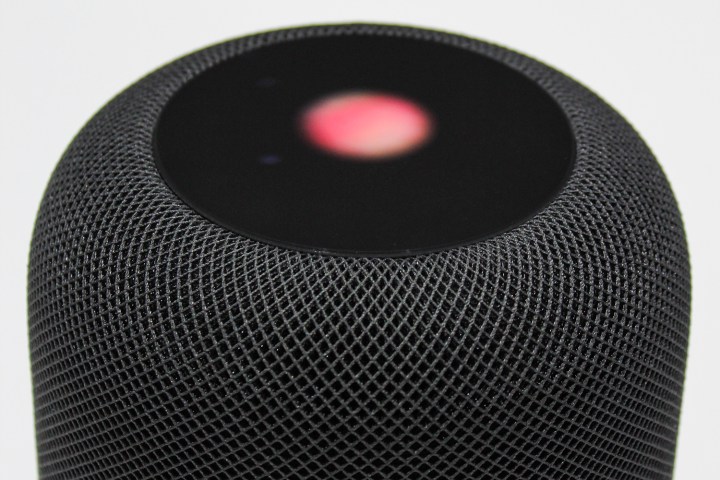
For the loyal Apple shoppers looking for the best-sounding speakers with a sleek design, try out Apple’s HomePod. That said— if you want a reliable speaker with great sound and a variety of features for a far lower price, then the Echo Studio is the choice for you. Suppose you listen to any music streaming service that isn’t Apple Music. In that case, Amazon Echo Studio is the best option for you if you’re looking for a voice assistant with music streaming capabilities.
Either speaker will be a great addition to your home or office. Ultimately, the choice you have to make will depend on which voice assistant, Siri or Alexa, you prefer and which streaming service you use.



